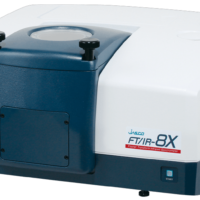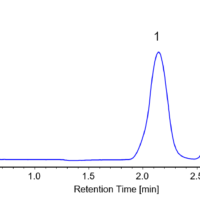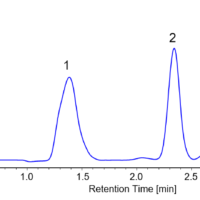Introduction
A mass spectrometer provides mass information of analytes, and generally provides high sensitivity combined with selective analysis, compared with conventional optical detectors. In recent years, it has been used as the method of selective detection for target analytes and identification of impurities in the development of pharmaceuticals and in a variety of other industries.
Supercritical fluid extraction (SFE) enables fast and efficient extraction using a supercritical fluid that has the specific characteristics of highly diffusivity, permeability, and solubility. Carbon dioxide (CO2) has been widely used as an extraction solvent in SFE because it easily achieves a supercritical state under moderate conditions (supercritical temperature; 31ºC, supercritical pressure; 7.4 MPa). SFE with supercritical CO2 has advantages of easy post extraction handling, lower solvent costs, and automation by device control.
We developed a switching system combining SFE with preparative SFC and an MS detector, which provides extraction, preparation and purification with MS trigger in a single system. In this presentation, we will introduce the application of extraction from coffee beans with preparative separation and purification of caffeine using this system.
Experimental
Apparatus
Figure 2 shows the appearance of JASCO switching system of SFE/Prep SFC with MS detector used in this experiment. Figure 2 also shows the schematic diagram of this system. The column oven equipped with 10 position-11 port valves enables to switch several extraction vessels, analytical scale columns, and Semi-prep scale columns without re-plumbing. Figure 3 shows the cyclone separator (CS-87) used on the open-bed fraction collector. It significantly increases the fraction recovery. Figure 4 shows the extraction vessel (EV-2) used for SFE.
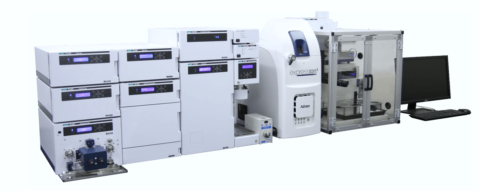
Fig.1 SFE/PrepSFC-MS Switching System
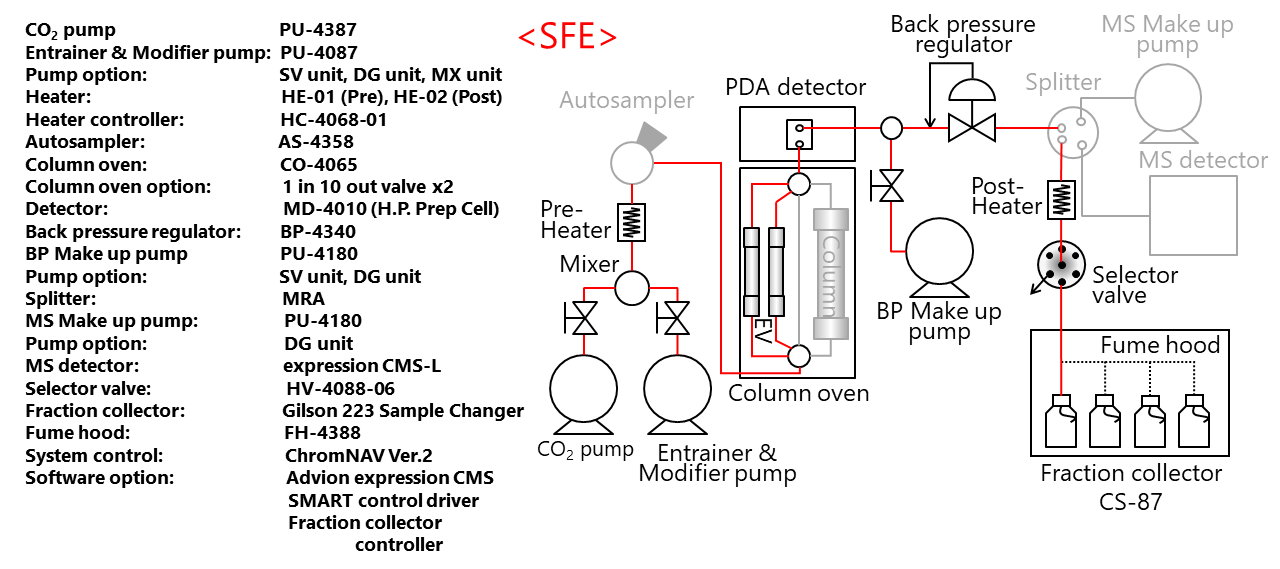
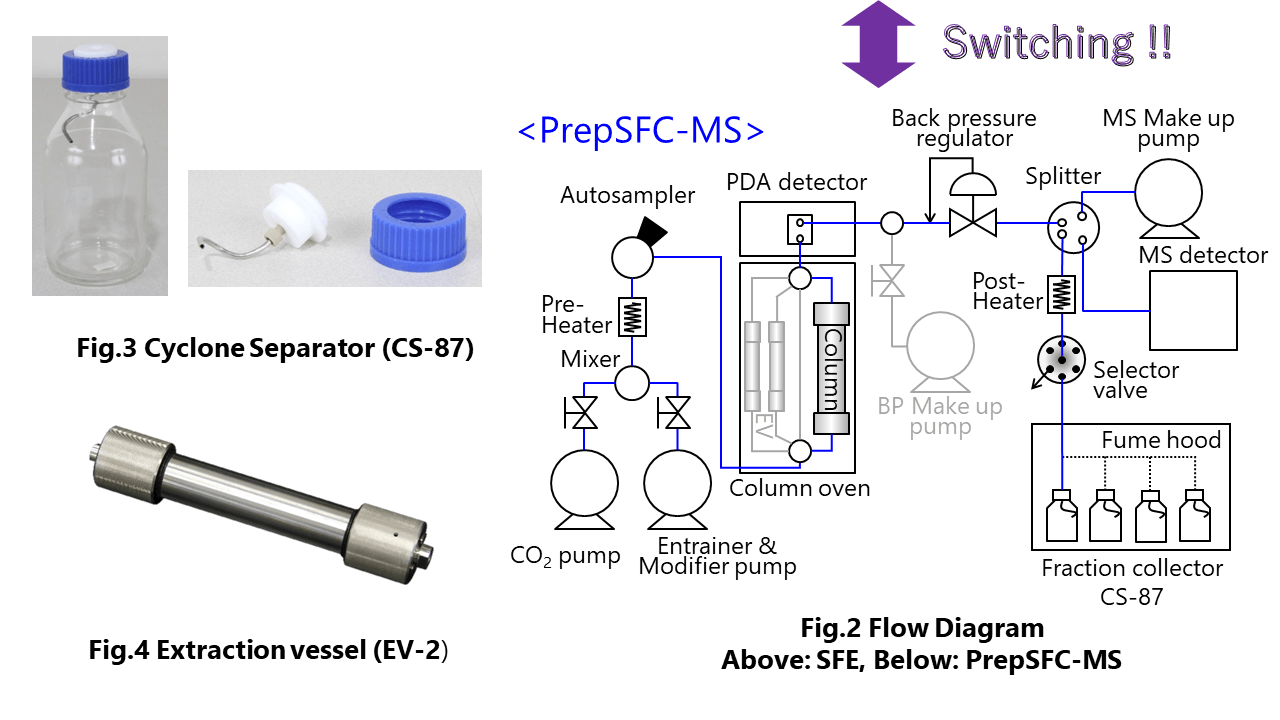
Conditions for SFE and Prep SFC-MS
SFE procedure was performed by PEEM (Programmed Extraction Elution Method) that enhances extraction efficiency and selectivity with changing the flow rate of an entrainer and back pressure in stages. We used mixture of methanol/water and ethanol/water as entrainers.
In Prep SFC, we used a silica type column of 20 mmI.D., and the separation was performed by gradient elution of CO2 and methanol at 30 mL/min of total flow rate. The ion source of MS detector was ESI-positive, and measurement mode was selected ion monitoring (SIM) at 195.2 m/z.
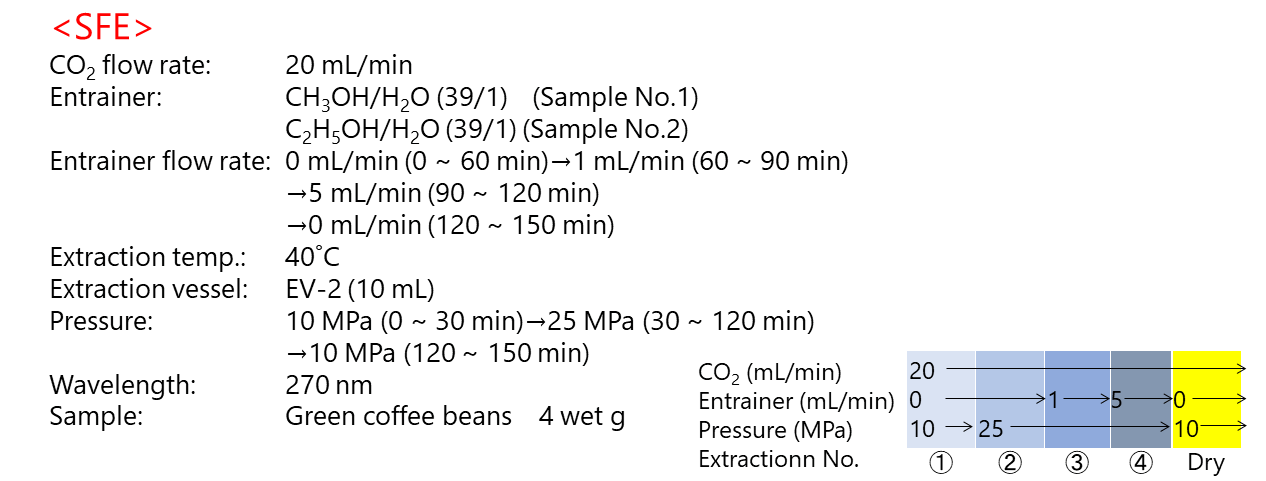
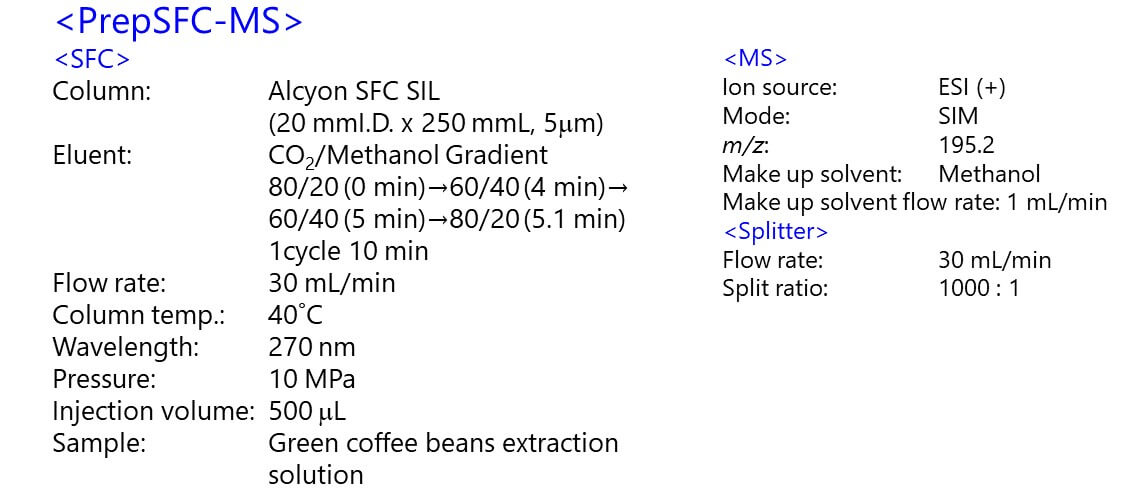
Sample Preparation
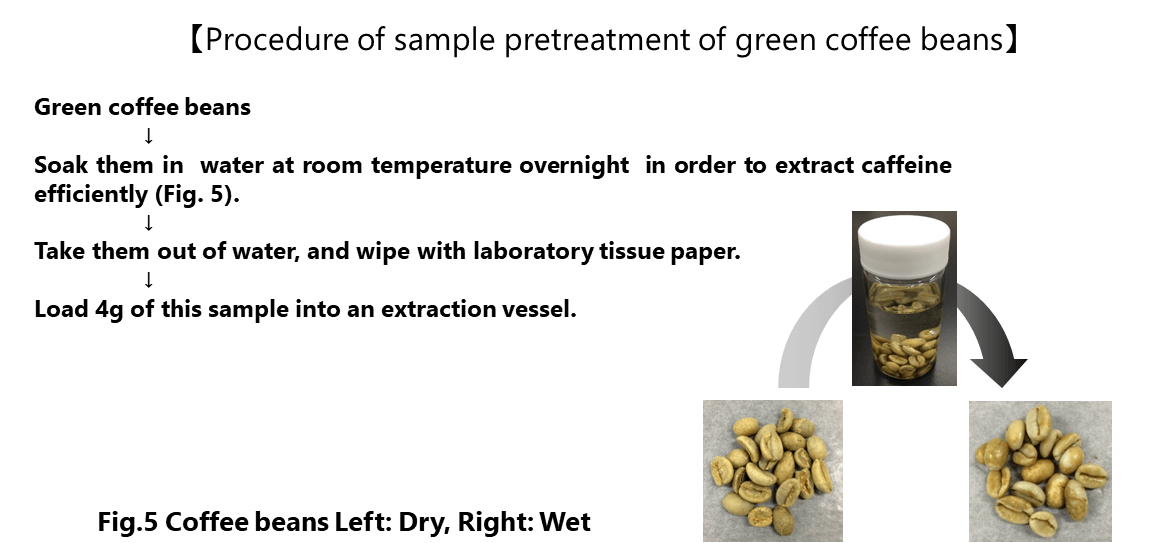
Results
<SFC>
Figure 6 shows the extraction result of sample 1. The extracts were collected in 4 vials at each extraction step (extraction 1 to 4). Table 1 shows the loading of green coffee beans into vessels, the composition of entrainers, and the collection volumes.
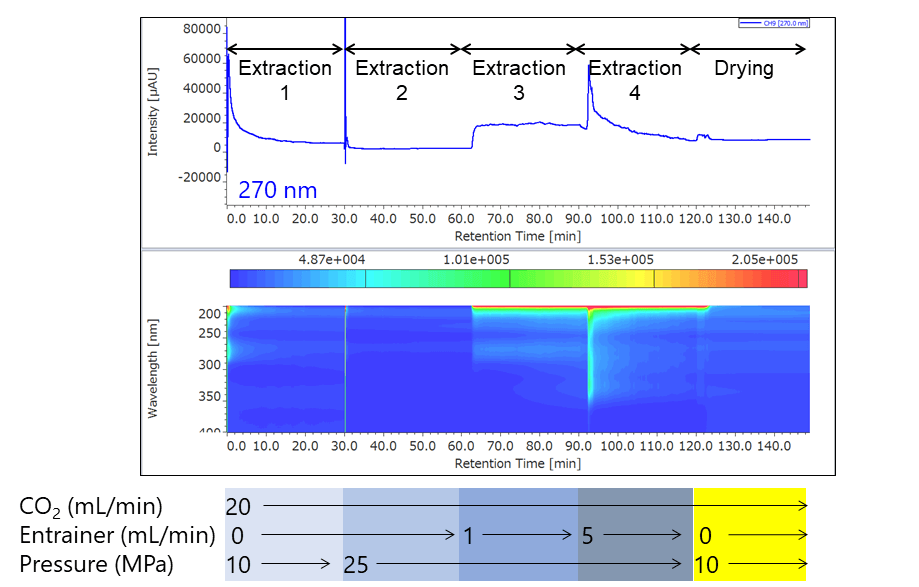
Fig.6 Extraction Result of Sample 1
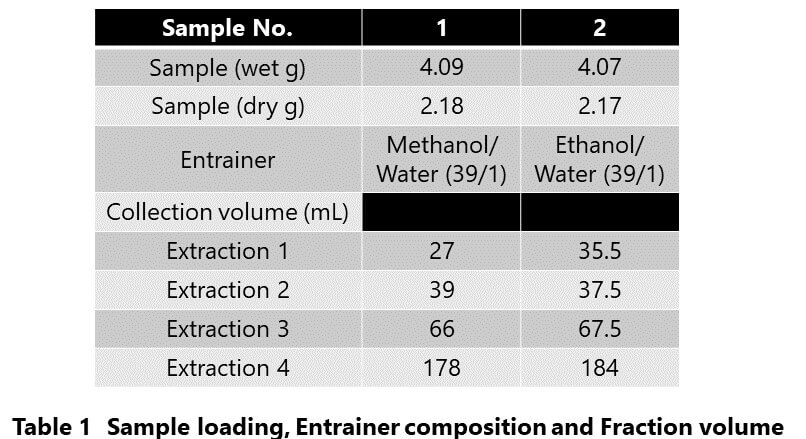
<Prep SFC- MS >
Figure 7 shows the chromatograms of each extraction (1 to 4) from sample 1. Table 2 shows the total extraction amount in each extraction, calculated from the peak area of caffeine standard solution (100 ppm, 500 µL). As shown in this table, highly extraction efficiency was achieved on sample 1 by using the mixture of methanol and water as an entrainer.
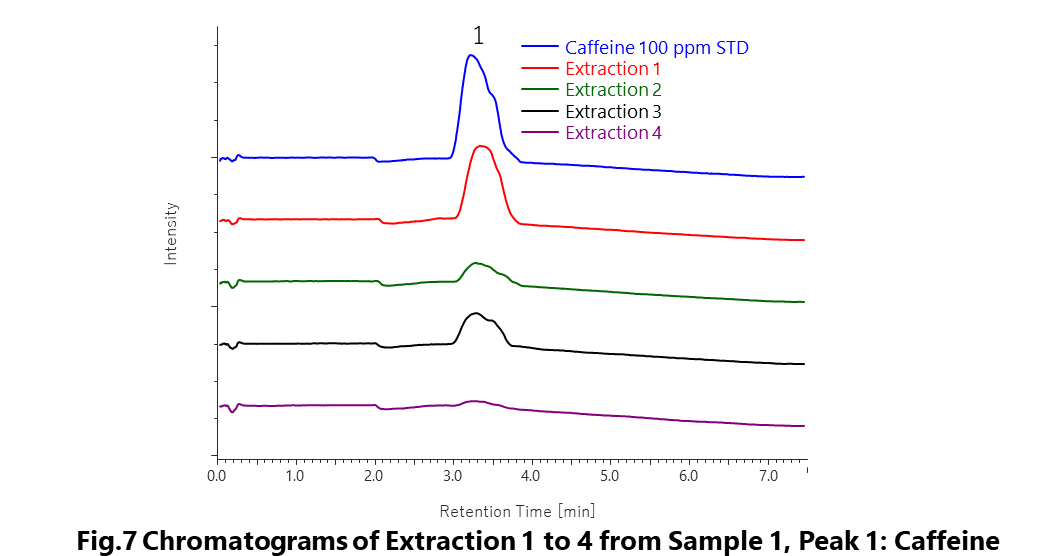
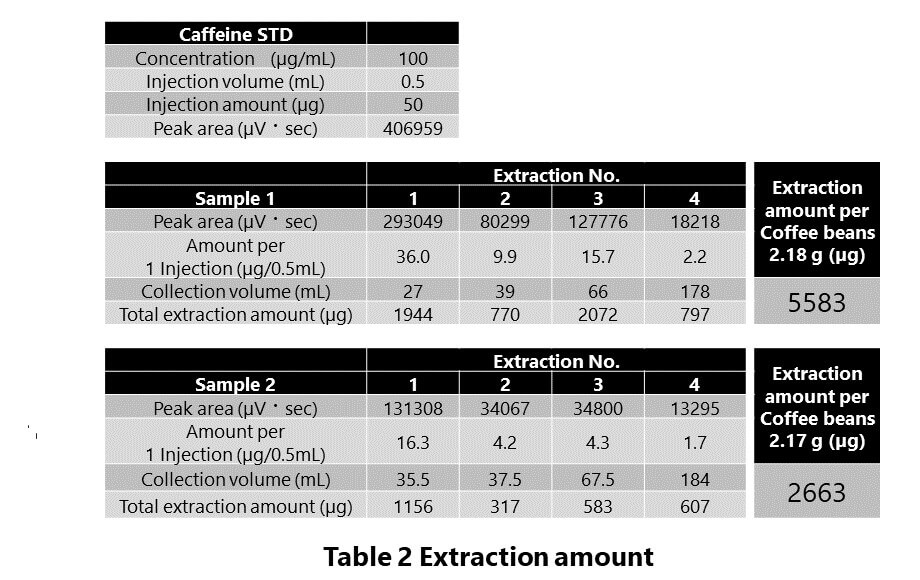
Figure 8 shows the collection results of caffeine peak in extraction 1 from sample 1, triggered based on the MS signal (CH1: 270 nm, CH2: m/z 195.2). MS triggering is effective for the fraction collection of non-chromophoric compounds. ChromNAV with fraction collector management program (Chromatography software) supports automatic fractions with advanced fraction algorithms for peak collection, using time, threshold, and slope, and can also be programmed to use signals simultaneously from multiple detectors.
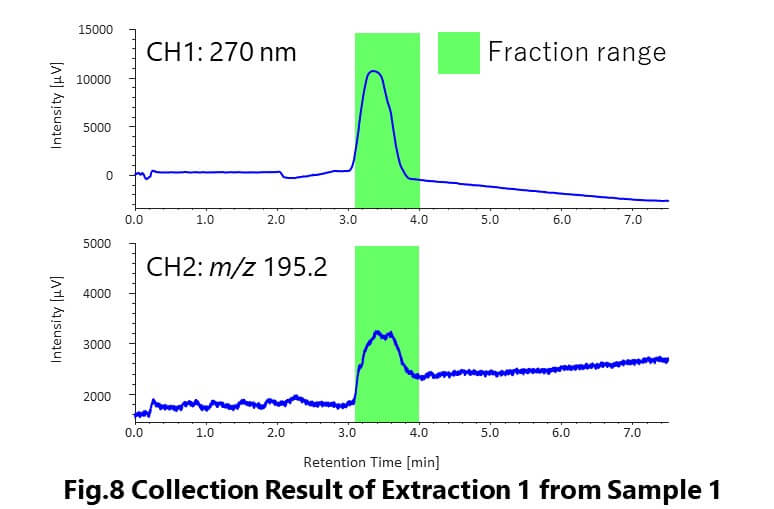
<Purity Determination of Extracts by HPLC-PDA>
We determined the purity of extracts collected in SFE by HPLC-PDA. Figure 9 shows the chromatograms of caffeine standard solution and concentrated extracts (mixture of extraction 1 to 4) from sample 1. Figure 10 shows the comparison of caffeine spectra between standard solution and sample solution. Highly correlation coefficient was obtained between them (> 0.9995). Figure 11 and Table 3 show the results of peak purity. 98.8% of the peak was determined high-purity caffeine.


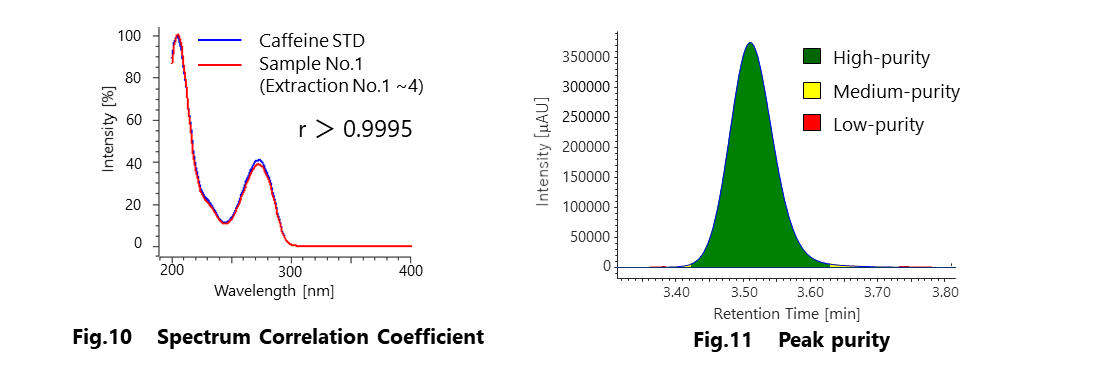

Conclusion
– We achieved the extraction and fraction collection of caffeine from green coffee beans by switching system of SFE/Prep SFC-MS.
– The combination of PDA and MS detectors enables the detection and fraction collection of various compounds with or without a chromophore.
– ChromNAV softoware provides automatic and accurate fractions with advanced fraction algorithms, and useful functions (ex. fraction simulation, graphical display of collection monitoring and results).
References
Poster Session at SFC2017 – Rockville, Maryland
Akitaka Tearada1, Satoe Iijima1, DJ Tognarelli2, John Burchell2, Yasuyo Sato1, Miki Kuwajima1
1 JASCO Corporation, 2967-5 Ishikawa-machi, Hachioji, Tokyo 192-8537
2 JASCO Incorporated, 28600 Mary’s Court, Easton, MD 21601

